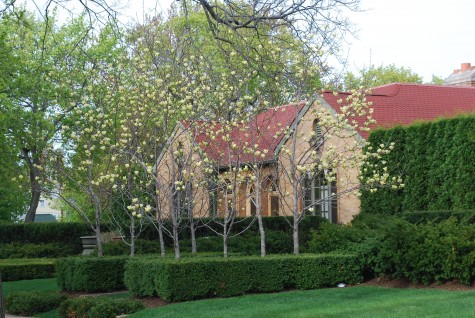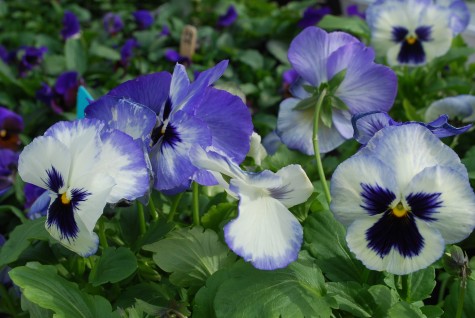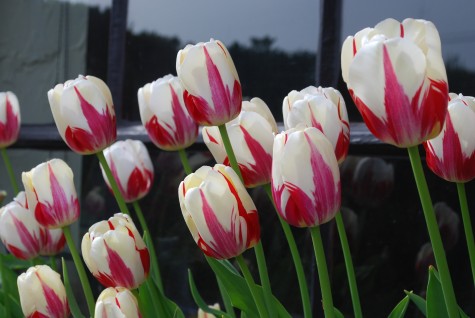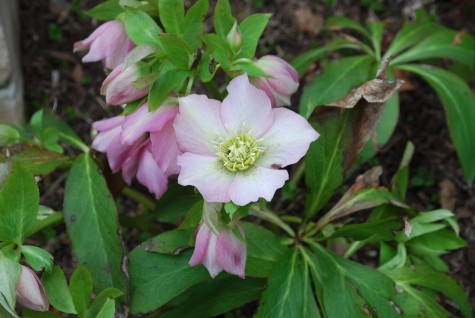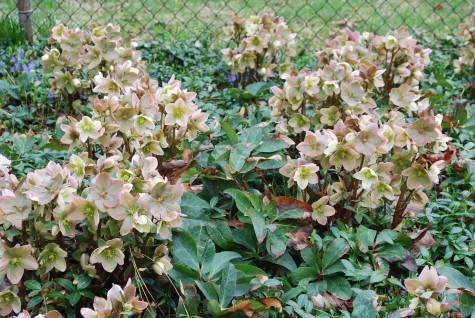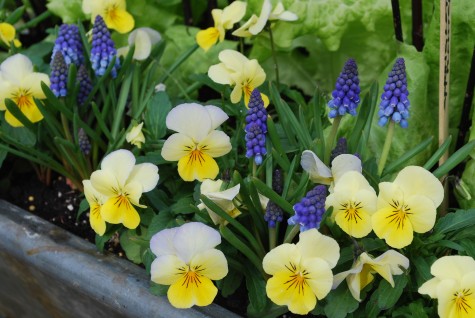 If you are a gardener in my zone, there is nothing quite like the experience of May. The winter lets go reluctantly. Early March was warm and friendly. Late March, April and the first two weeks of May were chilly enough to put on a jacket, and zip it up. When I went to work yesterday morning, the air temperature was 37 degrees. These are personal observations. The dormant trees, shrubs, perennials and bulbs have been responding to physical changes in the temperature and day length in a different way. Once all of the signs suggest it is time to bud out, leaf out, or emerge from the ground, the plants go for broke. They don’t much respond to daily changes. An apple tree in full bloom has next to no defense against a string of below freezing temperatures. For sheer drama, the spring is hard to beat.
If you are a gardener in my zone, there is nothing quite like the experience of May. The winter lets go reluctantly. Early March was warm and friendly. Late March, April and the first two weeks of May were chilly enough to put on a jacket, and zip it up. When I went to work yesterday morning, the air temperature was 37 degrees. These are personal observations. The dormant trees, shrubs, perennials and bulbs have been responding to physical changes in the temperature and day length in a different way. Once all of the signs suggest it is time to bud out, leaf out, or emerge from the ground, the plants go for broke. They don’t much respond to daily changes. An apple tree in full bloom has next to no defense against a string of below freezing temperatures. For sheer drama, the spring is hard to beat.
 It is so hard to believe this is already the 23rd day of May. For 23 days, I have been observing the process of spring. The hellebores and crocus emerge early. They are long finished blooming. The daffodils have had a very long run, given the past month of cold nights. Only a few straggling blooms remain. The tulips were challenged by the warm and then the cold, and then the May snow-it was not their best year. The magnolias have already shed most of their flowers. My American dogwoods are in full bloom-how incredibly beautiful they are this spring. All of the evergreens are pushing that lush lime green spring growth that makes my gardening heart beat a little faster. The azaleas and lily of the valley in my north side garden are blooming in much the same fashion as they have for the past 22 years.
It is so hard to believe this is already the 23rd day of May. For 23 days, I have been observing the process of spring. The hellebores and crocus emerge early. They are long finished blooming. The daffodils have had a very long run, given the past month of cold nights. Only a few straggling blooms remain. The tulips were challenged by the warm and then the cold, and then the May snow-it was not their best year. The magnolias have already shed most of their flowers. My American dogwoods are in full bloom-how incredibly beautiful they are this spring. All of the evergreens are pushing that lush lime green spring growth that makes my gardening heart beat a little faster. The azaleas and lily of the valley in my north side garden are blooming in much the same fashion as they have for the past 22 years.
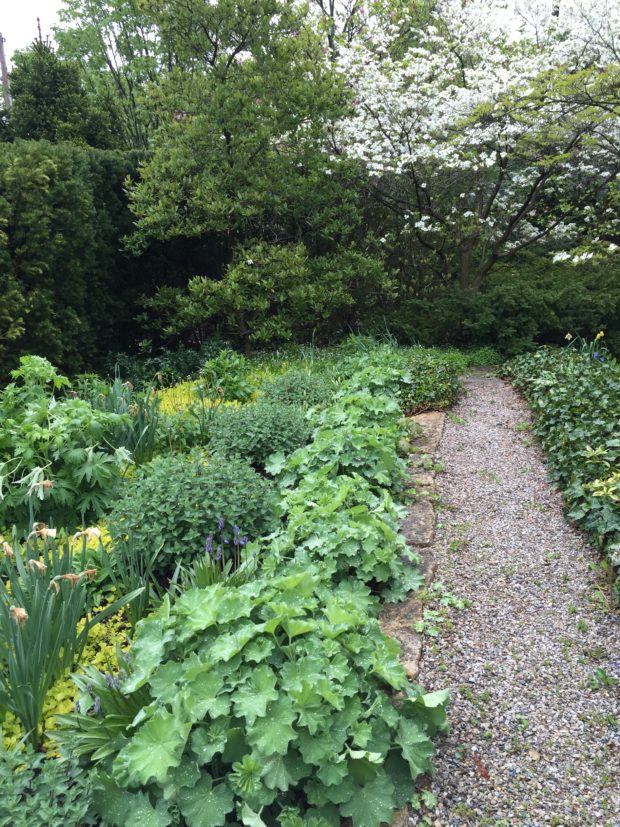 The few perennials that I have are growing with abandon. The lady’s mantle, catmint, and delphiniums are especially robust. That growing with abandon is a good description of the spring season. I do not have a fancy landscape or garden. It is an ordinary trial and true urban garden. It is shot through with early spring weeds. There are places where the design is less than stellar, or not apparent. Woe the design move that is not visually apparent! There are more than a few places that need updating. There is no time to think about that now. The spring is the time to enjoy each and every plant emerging from the strangle hold of winter.
The few perennials that I have are growing with abandon. The lady’s mantle, catmint, and delphiniums are especially robust. That growing with abandon is a good description of the spring season. I do not have a fancy landscape or garden. It is an ordinary trial and true urban garden. It is shot through with early spring weeds. There are places where the design is less than stellar, or not apparent. Woe the design move that is not visually apparent! There are more than a few places that need updating. There is no time to think about that now. The spring is the time to enjoy each and every plant emerging from the strangle hold of winter.
 To my delight, a modest stand of sweet woodruff, and campanula porscharskayana has completely covered the ground. The leafy remains of some old daffodils are grassy good contrast to the plants covering the ground. The weeds in the path – they are growing with abandon too. The obsession with pulling my weeds and cleaning up will come later. I am wholly engaged in watching the plants do what they do.
To my delight, a modest stand of sweet woodruff, and campanula porscharskayana has completely covered the ground. The leafy remains of some old daffodils are grassy good contrast to the plants covering the ground. The weeds in the path – they are growing with abandon too. The obsession with pulling my weeds and cleaning up will come later. I am wholly engaged in watching the plants do what they do.
 I have only 3 plants of variegated lily of the valley. None of them have particularly increased in size over the past 3 years. This plant has two stalks this year-how great is that? These three plants, growing in spite of being overrun by ivy, may be small, but they are an important part of my experience of spring.
I have only 3 plants of variegated lily of the valley. None of them have particularly increased in size over the past 3 years. This plant has two stalks this year-how great is that? These three plants, growing in spite of being overrun by ivy, may be small, but they are an important part of my experience of spring.
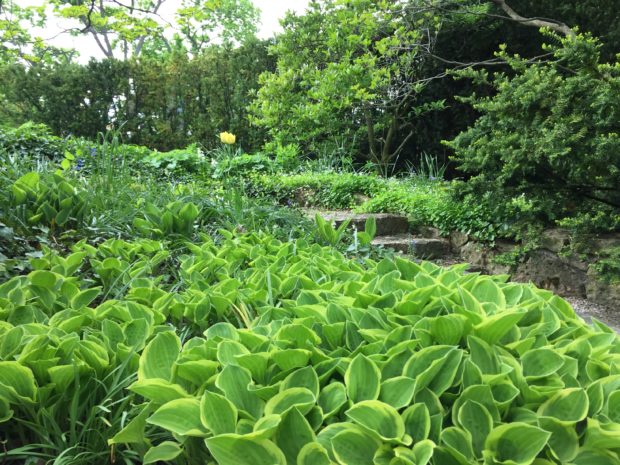 The joy of designing is different. It so much more about architecture, flow, and sculpture. It is much about line, direction, mass, texture, color, and function. Though I am designing for clients, and have done so regularly since the beginning of March, my spring is all about the plants.
The joy of designing is different. It so much more about architecture, flow, and sculpture. It is much about line, direction, mass, texture, color, and function. Though I am designing for clients, and have done so regularly since the beginning of March, my spring is all about the plants.
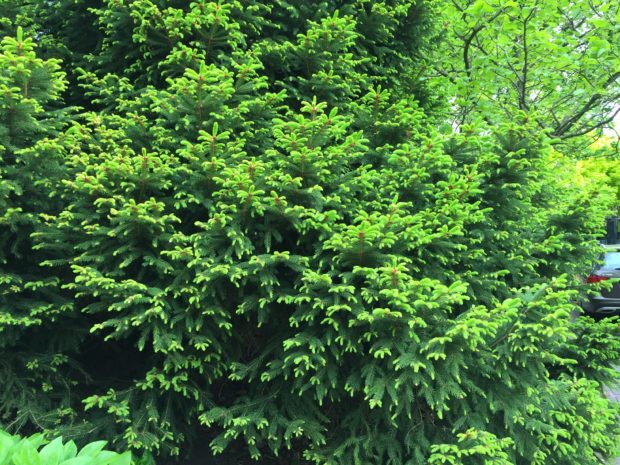 I live in an urban neighborhood. Some landscapes and gardens are well designed. Other properties have nothing much that could be attributed to great design, but every one of their plants is growing just the same as mine. If they falter from neglect, that sorry situation will become apparent later. I take several things from this. Nature has its own independent agenda. And, those gardeners who are more interested in plants than design have my respect. At this moment in the season, I am right with them. Even though the grasses and hardy hibiscus will not be fully grown and in their glory until much later, watching the process by which they broach the spring is every bit as interesting as their flowers. The spring means good things for every square inch of ground from which a plant might grow.
I live in an urban neighborhood. Some landscapes and gardens are well designed. Other properties have nothing much that could be attributed to great design, but every one of their plants is growing just the same as mine. If they falter from neglect, that sorry situation will become apparent later. I take several things from this. Nature has its own independent agenda. And, those gardeners who are more interested in plants than design have my respect. At this moment in the season, I am right with them. Even though the grasses and hardy hibiscus will not be fully grown and in their glory until much later, watching the process by which they broach the spring is every bit as interesting as their flowers. The spring means good things for every square inch of ground from which a plant might grow.
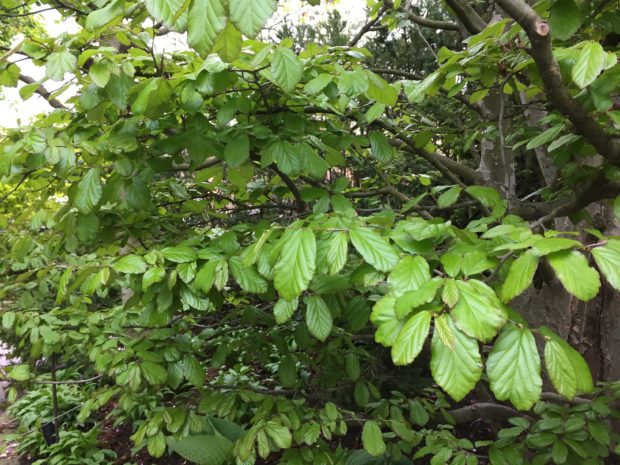 The parrotias are leafing out so fast, the leaves are wilted from the effort.
The parrotias are leafing out so fast, the leaves are wilted from the effort.
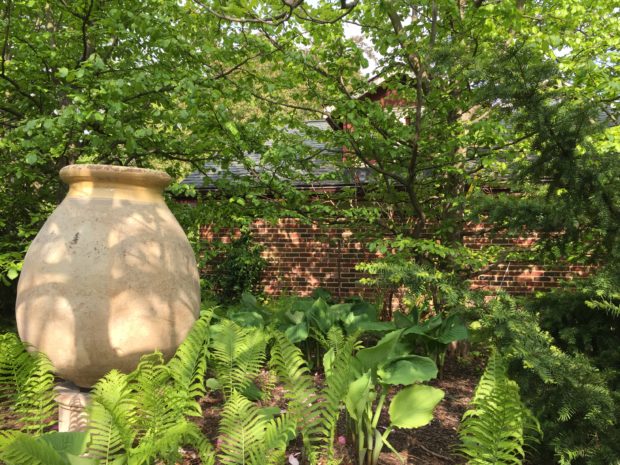 The ferns and hostas are in that gawky adolescent phase.
The ferns and hostas are in that gawky adolescent phase.
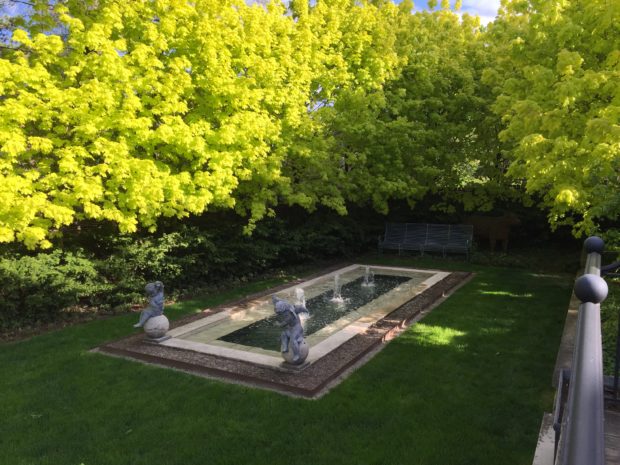 The Princeton gold maple leaves are the most shocking shade of chartreuse imaginable. Later in the summer, that lime green will fade to green.
The Princeton gold maple leaves are the most shocking shade of chartreuse imaginable. Later in the summer, that lime green will fade to green.
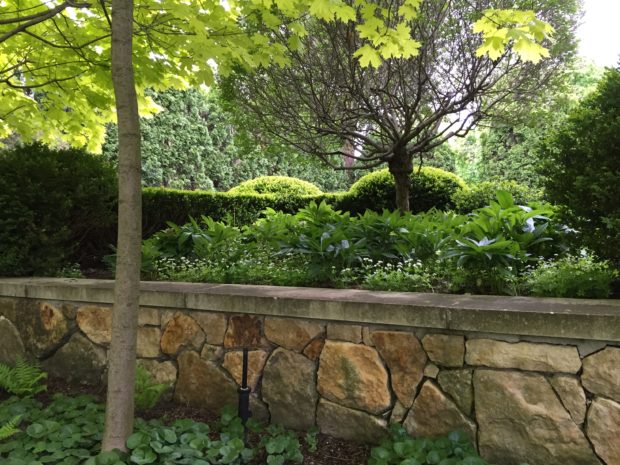 Everywhere I look something is growing.
Everywhere I look something is growing.
 A seedling Helleborus argutifolius has taken 4 years to grow to blooming size. A mild winter means I have had the please of three blooming stalks for over a month now.
A seedling Helleborus argutifolius has taken 4 years to grow to blooming size. A mild winter means I have had the please of three blooming stalks for over a month now.
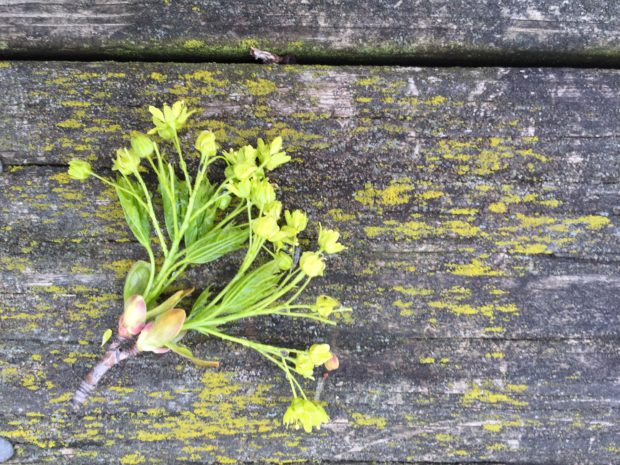 What great May days we are having.
What great May days we are having.
